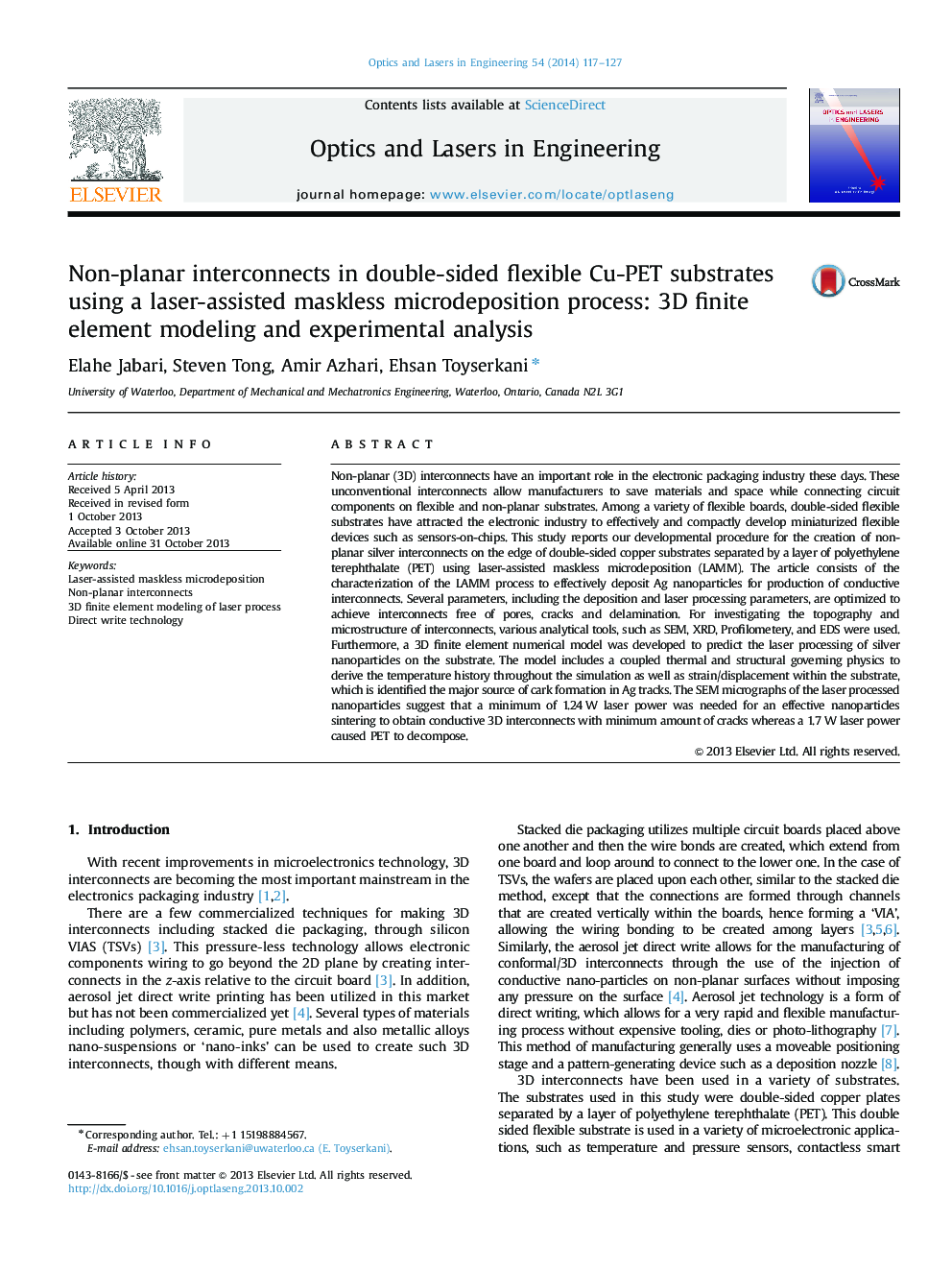| کد مقاله | کد نشریه | سال انتشار | مقاله انگلیسی | نسخه تمام متن |
|---|---|---|---|---|
| 743624 | 1461739 | 2014 | 11 صفحه PDF | دانلود رایگان |

• Laser-assisted maskless microdeposition used in making non-planar Ag interconnects.
• The process is characterized numerically and experimentally and results are compared.
• Conductive interconnects on slanted edge of Cu-PET boards are feasible at power of 1.24 W.
• The quality is sensitive to small changes of laser power.
Non-planar (3D) interconnects have an important role in the electronic packaging industry these days. These unconventional interconnects allow manufacturers to save materials and space while connecting circuit components on flexible and non-planar substrates. Among a variety of flexible boards, double-sided flexible substrates have attracted the electronic industry to effectively and compactly develop miniaturized flexible devices such as sensors-on-chips. This study reports our developmental procedure for the creation of non-planar silver interconnects on the edge of double-sided copper substrates separated by a layer of polyethylene terephthalate (PET) using laser-assisted maskless microdeposition (LAMM). The article consists of the characterization of the LAMM process to effectively deposit Ag nanoparticles for production of conductive interconnects. Several parameters, including the deposition and laser processing parameters, are optimized to achieve interconnects free of pores, cracks and delamination. For investigating the topography and microstructure of interconnects, various analytical tools, such as SEM, XRD, Profilometery, and EDS were used. Furthermore, a 3D finite element numerical model was developed to predict the laser processing of silver nanoparticles on the substrate. The model includes a coupled thermal and structural governing physics to derive the temperature history throughout the simulation as well as strain/displacement within the substrate, which is identified the major source of cark formation in Ag tracks. The SEM micrographs of the laser processed nanoparticles suggest that a minimum of 1.24 W laser power was needed for an effective nanoparticles sintering to obtain conductive 3D interconnects with minimum amount of cracks whereas a 1.7 W laser power caused PET to decompose.
Journal: Optics and Lasers in Engineering - Volume 54, March 2014, Pages 117–127